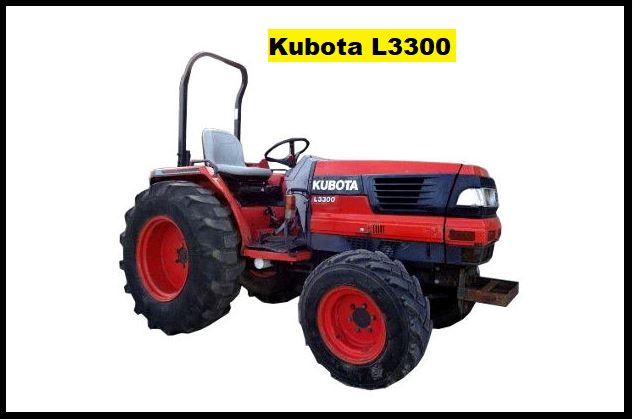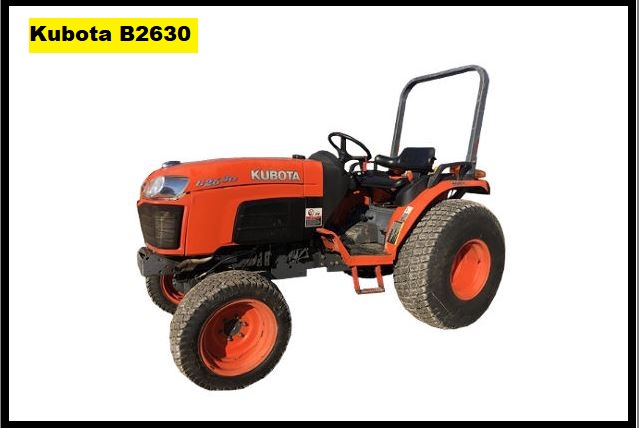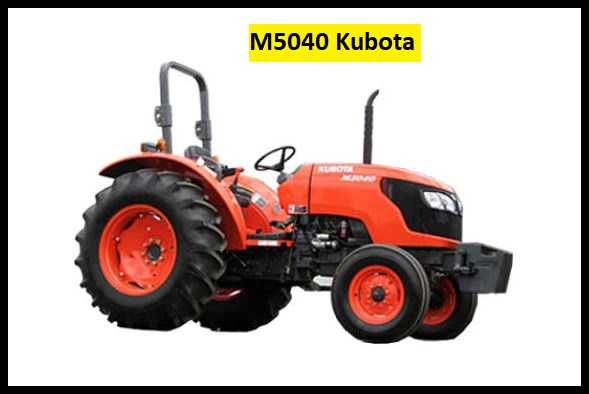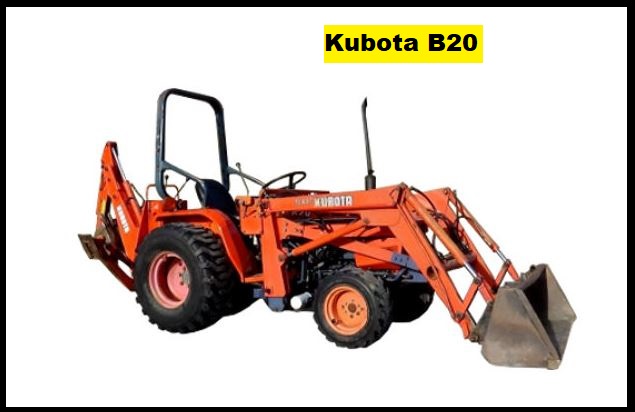Kubota l3300 Specification, Lift Capacity, Weight, Oil Capacity, Prices & Overview
If you’re looking for a Kubota l3300 price, specs, reviews, weight, and features, you’ve come to the right place. Our team has confirmed this information with several Kubota representatives and associates.
Let’s discuss the Kubota l3300 price, specifications, and reviews.
Finding complete information on the internet can be challenging. Therefore, we prefer that you save your precious energy and time.
Our team has compiled complete and step-by-step information on Kubota l3300 price, specs, reviews, weight, and features to make your search easier.
So, without further ado, let’s get to the main topic.

About Kubota L3300
The Kubota L3300 is a compact utility tractor from the Grand L series. It can have either 2WD or 4WD. From 1994 to 1999, this tractor was made by the Kubota company.
The Kubota L3300 comes with either a synchronized shuttle (FST) transmission with a dry disc clutch and eight forward and eight reverse gears or a power shuttle (GST) transmission with a dry disc clutch and eight forward and eight reverse gears.
The Kubota D1703-A engine was in the Kubota L3300, which was a small utility tractor. It is a 1.6 L, 1,647 cm2, (100.5 cuin), three-cylinder diesel engine with natural aspiration.
The Kubota L3300 has a 35.0 liter (9.2 US gal; 7.7 Imp. gal) fuel tank, hydrostatic power steering, wet disc brakes, an open operator station with two-post ROPS, and wet disc brakes.
Kubota L3300 Price
Kubota L3300 Original Price: $10,750
Kubota L3300 Lift Capacity
Kubota L3300 lift capacity is 2,870 lbs 1301 kg
Kubota l3300 Weight
Kubota L3300 weight is 3070 pounds
Kubota l3300 Oil Capacity
Kubota L3300 oil capacity is 3.7 qts 3.5 L
Kubota L3300 Specs
Engine
| Engine Model | Kubota D1703-A |
| Engine Type | 4-cycle, vertical, 3-cylinder indirect injection diesel |
| Number of Cylinders | 3 |
| Displacement, cu in (L) | 100.5 (1.647) |
| Engine Bore, in (mm) | 3.40 (87.0) |
| Engine Stroke, in (mm) | 3.60 (92.4) |
| Aspiration | Natural |
| Rated Engine Power, hp (kW) | 35.1 (26.2) |
| Rated Engine Speed, rpm | 2700 |
| Compression Ratio | 23:1 |
| Firing Order | 1-2-3 |
| Fuel System | Indirect injection |
| Lubricating system | Forced lubrication by trochoidal pump |
| Cooling system | Forced circulation with water pump |
| Fuel Tank Capacity, gal (L) | 9.2 (35.0) |
| Oil Capacity, qts (L) | 3.7 (3.5) |
| Coolant Capacity, qts (L) | 7.4 (7.0) |
| Electrical System Rating, Volts | 12 |
| Alternator Rating, Amps | 40 |
| Starting System | Electric Starter |
| Battery Rating, CCA | 490 |
Power Take Off
| PTO Operational Type | Independent |
| PTO Horsepower, hp (kW) | 28.0 (20.9) |
| Rear PTO Speed, rpm | 540 |
| Mid PTO Speed, rpm | 2000 |
| Rear PTO/Engine Speed, rpm | 540/2670 |
| Mid PTO/Engine Speed, rpm | 2000/2623 |
Standard Transmission
| Transmission Type | FST Sync Shuttle |
| Gearbox Type | 8F/8R, fully synchronized |
| Number of Forward Gears | 8 |
| Number of Reverse Gears | 8 |
| Clutch Type | Dry type single stage |
| Oil Capacity, qts (L) | 41.3 (39.0) |
| Maximum Forward Speed, mph (kph) | 16.3 (26.2) |
| Maximum Reverse Speed, mph (kph) | 15.0 (24.1) |
Optional Transmission
| Transmission Type | GST (Glide Shift) |
| Gearbox Type | 8F/8R, with creeper 16F/16R |
| Number of Forward Gears | 8 (16) |
| Number of Reverse Gears | 8 (16) |
| Clutch Type | Dry type single stage |
| Oil Capacity, qts (L) | 41.3 (39.0) |
| Maximum Forward Speed, mph (kph) | 16.3 (26.2) |
| Maximum Reverse Speed, mph (kph) | 15.0 (24.1) |
Wheels And Tires
| Drive Wheels | 2WD/4WD |
| Steering Configuration | Front steer |
| Steering System | Hydrostatic power |
| Brakes Type | Wet disc |
| Front Tire Size (2WD) | 5.00×15 |
| Front Tire Size (4WD) | 7.20×16 |
| Rear Tire Size | 12.4×24 |
| Front Tread (2WD), in (mm) | 37.8-49.6 (960-1250) |
| Front Tread (4WD), in (mm) | 43.5 (1105) |
| Rear Tread, in (mm) | 40.7-55.3 (1030-1405) |
Hydraulics System
| Hydraulic System Type | Open Center |
| Implement Pump Flow, gpm (Lpm) | 7.0 (26.5) |
| Steering Pump Flow, gpm (Lpm) | 4.7 (17.7) |
| Hydraulic Pressure, Bar (psi) | 175 (2490) |
| Hydraulic Capacity, gal (L) | 10.3 (39.0) |
| 3-Point Hitch Category | 1 |
| Draft Sensing or Lift Control | Position control |
| Standard Lift Capacity at lift pin, lb (kg) | 2870 (1300) |
| Standard Lift Capacity 24-in (600 mm) behind pin, lb (kg) | 2200 (1000) |
| Upper Link Pin Diameter, in (mm) | 0.75 (19.0) |
| Lower Link Pin Diameter, in (mm) | 0.88 (22.4) |
| Lower Hitch Spacing, in (mm) | 28 (718) |
Dimensions And Weight
| Wheelbase (2WD), in (mm) | 65.9 (1675) |
| Wheelbase (4WD), in (mm) | 65.7 (1670) |
| Overall Length, in (mm) | 112.2 (2850) |
| Height (ROPS), in (mm) | 83.9 (2130) |
| Overall Width, in (mm) | 53.3 (1350) |
| Ground Clearance, in (mm) | 13.8 (350) |
| Turning Radius (2WD), in (mm) | 95 (2400) |
| Turning Radius (4WD), in (mm) | 91 (2300) |
| Weight (2WD), lb (kg) | 2610 (1185) |
| Weight (4WD), lb (kg) | 2765 (1255) |
Kubota L3300 Review
The Kubota L3300 is a versatile and dependable compact tractor, cherished for its adaptability and reliability. It derives its power from a robust 35-horsepower Kubota diesel engine and boasts a category 1 three-point hitch and PTO (Power Take-Off).
The L3300 is designed to work with a variety of attachments, making it well-suited for a broad spectrum of tasks, including mowing, tilling, and hauling.
For a full review, please check this YouTube video.
Kubota l3300 Attachments
| Attachment overview | |
| 72″ mid-mount mower deck | |
| Snowblower | |
| Blade | |
| Front-end loader | |
| Backhoe |
72″ Mower deck |
|
| Type: | mid-mount Kubota RC72-29 |
| 3-blade with a hydraulic lift | |
| Cutting width: | 72 inches 182 cm |
| Cut height: | 1.5 to 4.0 inch 3 to 10 cm |
Blade |
|
| Type: | front-mount Kubota L2061A |
| Width: | 60 inches 152 cm |
| Lift type: | hydraulic |
| Angle type: | hydraulic |
Blade |
|
| Type: | front-mount Kubota L2072 |
| Width: | 72 inches 182 cm |
| Lift type: | hydraulic |
| Angle type: | hydraulic |
Kubota L3300 Problem
Engine Troubleshooting
The engine doesn’t start or start hard
- Fuel filter element clogged: Clean the filter or put in a new filter element
- Closed fuel cock: To inject fuel, open the fuel on-off cock.
- Air in fuel lines – Bleed fuel lines
- Injectors that are dirty or broken: Check the fuel injectors and replace them if necessary.
- Incorrect fuel injection pump – Rebuild or replace pump
- Low compression – Check the cylinder block and replace any parts that are broken.
Engine stops during operation
- The low temperature of the coolant – Let the engine warm-up
- Air in fuel lines – Bleed fuel lines
- Fuel injections that aren’t even: Fix or adjust?
- The fuel filter is clogged; replace the filter element.
- If the fuel injectors are broken or dirty, replace them.
Diesel starts but suddenly stops
- The timing of the fuel injection pump is wrong. The timing of the fuel injection pump needs to be fixed.
- Clogged fuel filter element – Change filter element
- The fuel injector nozzles are broken; check and replace them as needed.
- Fuel injection pump damage – Replace or fix the pump
- The air cleaner element is clogged. Service or replace the air cleaner.
Engine stops while idling
- Incorrect settings for low idle speed – Correct settings for low idle
- Fuel injection pump damage – Get a new fuel pump or fix the one you have.
- Fuel injector nozzles are faulty – Injector nozzles need to be fixed or replaced.
- Valve not in the right place—Adjustment process needed
Engine overheats
- If there isn’t enough coolant in the cooling system, add more coolant. Fix any leaks if you need to.
- If the cooling system is dirty or parts of it are broken – Flush the cooling system or replace parts that are broken.
- Not enough oil in the engine—Fill the oil to the right level
- The fan belt is broken or the belt tension is unadjusted – Fix the belt tension or get a new one.
- The thermostat is broken – Check and make any needed changes
Diesel power loss
- Fuel injectors that are clogged: clean or replace the fuel injectors
- Improper fuel injection pressure – Adjust to the proper pressure
- The air filter element is clogged; maintenance is needed for the air filter
- Clogged oil filter – Change or clean the engine oil filter element
- Too much is being asked of the engine. – Shift down or lighten the load.
- Not enough space between the valves: Check and adjust as needed
- Low idle speed set wrongly – Need to change idle speed
- Dirt in the hoses or pipes: The fuel hoses and pipes must be clean.
- Loss of engine compression: leaking or broken valves; need to replace valves.
Engine knocking or noise
- Incorrectly set the timing of the fuel injection pump – Change the timing of the injections
- Fuel injector nozzles are damaged or dirty – Check the injector nozzles and change them as needed.
- Not enough engine oil – Check and add oil to the engine
- The engine hasn’t warmed up enough—Warm up the engine as needed
- Failure of the crankshaft or main bearings: Need to replace worn parts
- Piston rings are broken or worn out—replace piston rings.
Diesel engines consume too much oil
- Gaskets or seals that don’t work well can cause oil leaks. – Replace defective parts
- Wrong oil viscosity—Use oil with the right thickness
- If the piston rings are worn or stuck, they need to be changed.
- Worn valve guides and valve stems – Change the valves
- Pistons or cylinder liners are scratched. Check the liners and pistons and replace them as needed.
Electrical System Troubleshooting
The battery is not charging
- Bad cell in the battery—Change the battery
- Wire harness damage to the battery – Check the battery wires for damage, then replace or switch them.
- Cables and terminals that are loose or rusty – Battery terminals and cables may need to be fixed or tightened.
- Belt damage or incorrect belt tension adjustment – Tighten or loosen the belt as needed or switch belts
Starter cranks slowly
- Low battery capacity – Battery needs to be charged
- Battery discharges quickly – Check the battery or get a new one.
- Damaged battery electrical wire harness – Check for damage, replace, or fix electrical wires.
- Battery terminals and cables that are rusty or loose – Tighten terminals and cables or fix them
The starter will not crank
- Low battery power—The battery is empty, charge it.
- a battery that is dead or broken – Need to charge the battery or get a new one
- The starter motor is broken. Fix or replace the starter.
- Wiring harness not connected right or disconnected: Check the wiring harness and connect it right.
Conclusion
That was all about the Kubota L3300 Price, Specs, Review, and Key Features, But if you have any queries regarding this post, then please Comment below in the comment Box, We will Solve your Problem as soon as possible. Thanks for Visiting our Site.
Kubota L3300 FAQ
How many horsepower is a Kubota L3300?
Kubota L3300 engine produces a 35.1 hp 26.2 kW
How much does a Kubota L3300 weigh?
Kubota L3300 weight is 3070 pounds
This article I have created to give you complete information about the Kubota L3300 Specs, Price with its Review.
Check out the given details which help you to know about the Kubota L3300 Specs, Price with its Review.
For more information visit our website: Commercialvehicleinfo.com





